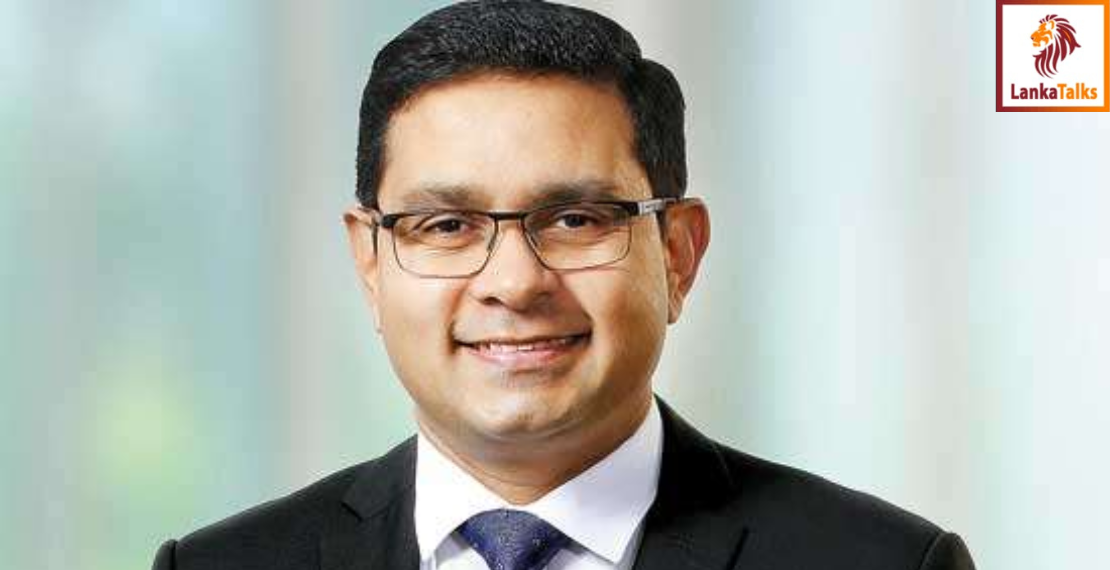Sustainability is now a core element of every decision and action –ComBank MD/CEO
A total, all-encompassing commitment to sustainability requires sustainability-related metrics to permeateevery element of business, and must comprehensively engage employees, customers, business partners and the community, explains Commercial Bank Managing Director/CEO Mr. Sanath Manatunge in this interview, as he assesses the Bank’s success in this domain.
Q: Sustainability has become a top priority in business today. What does this mean for Commercial Bank?
Sustainability has been a top priority at Commercial Bank for many years. We have funded many environment-related initiatives, invested in reducing the ecological impacts of our operations, made significant progress in migrating our customers to paperless banking and developed green lending products. We place equal emphasis on the three pillars of sustainability – the Environmental, the Social, and the Economic. Central to our approach is the understanding that a substantial portion of our business sustainability directly relies on environment and biodiversity, and that threats to these elements represent a potential risk to the Bank.As the leading private sector bank in the country and the largest lender to the SME sector, Commercial Bank is well positioned to shape a sustainable future and make a positive impact. We have the opportunity and the ability to drive positive change and contribute to the well-being of the environment, society, and the economy.
Q: Does the Bank have a separate mission statement relating to sustainability?
Yes, we do. We have made sustainability a core element of every action we take. A dedicated purpose statement and a comprehensive Sustainability Framework underpin our endeavors, outlining our mission, approach, and specific sustainability goals.This means that sustainability aspects have to be considered in everything we do, and the framework provides the guiding principles and standards that must apply to our decisions and actions. This approach transcends internal processes:the Bank actively pursues partnerships and external engagements with like-minded organisations in the sustainability sphere. We have implemented policies and established committees to oversee our sustainability efforts, to ensure effective governance and achievement of objectives. More importantly, we have transformed internal culture of the Bank for our teams to embrace sustainability as part of their regular activites.
Q: The Bank also recently modified its logo to introduce a depiction of sustainability. Why was that necessary?
We introduced a green element to our logo on 1st January 2024. This represents the Bank’s multifaceted commitment to sustainability, encompassing diversity, inclusivity, good governance, transparency, social equity, accountability and eco-friendly banking solutions. We are a sustainable bank in everything we do, and the first organisation in Sri Lanka to proclaim that commitment in its corporate identity.We want all our stakeholders, from employees, customers, shareholders and business partners, to see that at first glance, and to understand that our commitment to sustainability isn’t just a buzzword.It is ingrained in our DNA, influencing our decisions, actions and the services we offer.
Q: Does the Bank make an annual financial commitment for sustainability initiatives?
We have a budget dedicated exclusively to sustainability initiatives including business related activities such as green financial products as well as inclusivity, capacity building etc . Additionally, we have established a specialised unit within the bank which is solely focused on driving sustainability, and has been assigned clear Key Performance Indicators to measure our progress. We have set specific short, medium, and long-term goals at management committee levels, creating a strategic roadmap for sustainable initiatives.
We review our sustainability-linked projects and practices regularly at meetings of the Executive Sustainability Committee and the Sustainability Working Committee, ensuring transparency and accountability. This structured commitment reflects our dedication goes beyond simply talking about sustainability to actively implement and monitor impactful initiatives linked to our goals.
Q: What are the key areas that are covered by the Bank’s sustainability programme?
The Bank’s sustainability programme covers key areas that have a positive impact, encompassing Social Enterprise programmes with local and global partners, collaborations with entities like the IFC, UNDP, and Sarvodaya that aim to drive social initiatives that uplift communities and contribute to sustainable development, and awareness programmes conducted through digital channels. This is in addition to the focus areas already mentioned, such as projects to restore degraded habitats and ecosystems, minimizing the carbon footprint of our own operations, involving our customers in the effort by wide-spectrum digitalization of services, and lending to support businesses that are pursuing sustainability. One such example is the collaboration for an outreach programme with World Food Programme (WFP) to distribute funds to selected beneficiaries, ensuring access to food nutrition. This programme encompassed distributing funds across over 11,000 households in eight districts of the country.
We also engage in Training and Development to empower our workforce with the knowledge and skills necessary to integrate sustainability into everyday banking operations.Moreover, the Bank actively promotes volunteer programmes designed to uplift both the environment and social standards of the country. Using the collective strength of our Sustainability Group and the entire branch network, we have embarked on ambitious projects like our tree planting initiative, which aims to plant 100,000 trees across the island. Additionally, our collaboration with eminent global and national partners, such as the UNGC and the Banker’s Association, underscores our dedication to promoting and adopting sustainability best practices.
Q: In terms of Green Financing, what has the Bank achieved to date?
The Bank has designated Green Financing as a thrust area and began a collaboration with the International Finance Corporation in 2017 to strengthen its Green Financing strategy.We have developed a mechanism to tag and the capture the Green facilities we are financing from our Banking System. We are also tracking our Green financing via a tool called CAFI which is Climate Assessment for Financial Institutions. This is a system developed and maintained by the IFC. The Bank has been recognized by the IFC with two “CAFI Climate Impact” awards in the South Asian region in recognition of achieving the largest expected GHG reductions and highest number of climate finance transactions booked in South Asia through the CAFI tool in 2021 and 2022.
As far back as 2020 we issued a Position Statement on Climate Change, affirming the Bank’s commitment to combating climate change. The Bank has taken a position not to finance any coal-related activity, as part of this commitment. Over the years, we entered into multiple partnerships with credible international funding agencies to source credit lines to expand our Green Financing activities. I am proud to say that the Bank has been invited as a presenter and panelist at local and international forums to share our experiences and success in this sphere.We have also launched several green financing products, including Green Leases and Loans, the Diribala Green Development Loan, Green Home Loans and Green Building Loans for corporate and SME customers. Additionally, the Bank has engaged with Global Green Growth Institute (GGGI) to develop its Green Bond Framework, and is collaborating with organisations like the Green Building Council of Sri Lanka to enhance our Green Financing portfolio.
Q: To what extent does the Bank’s operational footprint contribute to its sustainability goals?
Commercial Bank is the first carbon-neutral bank in Sri Lanka. We achieved this milestone in 2020 and have maintained our carbon-neutral status since. This highlights our unwavering commitment to environmental responsibility. Our operations are carefully designed to minimize carbon emissions, demonstrating a proactive approach towards mitigating our impact on the environment. Our continuous efforts and innovative strategies, enable us to meet and exceed industry standards, reinforcing our dedication to a sustainable and eco-friendly banking model.
Q: What kind of contribution can be expected from automation and digitalization?
In the banking sector, automation and digitalization are key to achieve a sustainable future. The advancements we have made generate a significant impact on the environment by minimising the carbon footprint associated with physical banking. The reduction in paper and stationery usage further aligns with our environmental goals, contributing to a greener and more eco-friendly banking industry. Simultaneously, automation enhances the social pillar by increasing accuracy through decreased human interference, fostering trust and reliability among customers.It must also be noted that round the clock accessibility to banking services caters to evolving customer needs, particularly those of Gen Z, and contributes to the economic pillar by facilitating faster and more efficient financial transactions. As important, the digital shift promotes financial inclusion, by enabling us to reach underserved populations and remote areas, thus fostering economic development and stability. Our commitment to digitalization reflects our dedication to environmental responsibility, customer satisfaction, and inclusive economic growth.
Q: Having already achieved carbon neutral status, what is next for Commercial Bank in terms of sustainability?
Commercial Bank is now charting an ambitious course toward a more sustainable future. Our next steps involve the development of a comprehensive Climate Transition Plan, a roadmap that guides us in reducing our environmental impact further. A key focus is on embarking on a net-zero journey, where we aim to balance the emissions we produce with equivalent removals. As part of this commitment, we are increasing our lending exposure towards green financing, actively supporting projects and initiatives that promote environmental sustainability.
You Must be Registered Or Logged in To Comment Log In?



 Abishek
Abishek






